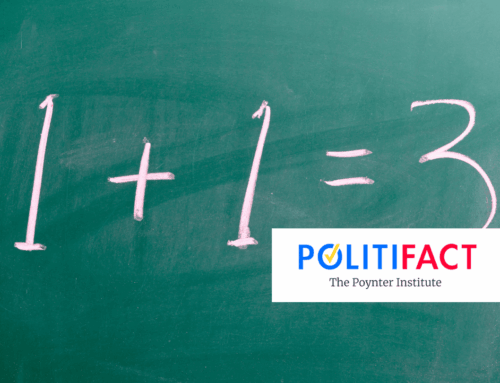Well folks, we made it to August. With the House and Senate in recess until September, it’s time to take stock of the Fiscal Year 2025 appropriations process. With two months until the new fiscal year, things aren’t looking great. The chambers haven’t agreed on a single spending bill and time is running short. Conventional wisdom says lawmakers should be keen to strike a deal to avert a government shutdown mere months before a presidential election. But both little in this session of Congress, or election cycle, seems to follow convention. So, with the stage set, let’s look at the current playing field.
As a quick refresher, keeping the governments’ lights on is basically the only constitutionally mandated activity Congress must undertake. The federal discretionary budget is divided into twelve separate bills which touch on everything the federal government deems a priority, from national security to wildfire response, funding congressional offices to keeping the National Parks open. Once all twelve bills are passed by each of the two chambers, the two groups meet to resolve any differences before sending each of the final bills to the president who subsequently signs them into law before the start of the new fiscal year. At least, in a wholesome, directed by Aaron Sorokin world, that’s what would happen.
Unfortunately, things are not quite as easy as they seem, as evidenced by the fact that the last time everything worked out that way was in 1997. (Even then the bills were not passed individually – so called regular order – but in packages of a few bills together. Last time regular order ruled was in 1994 – 30 years ago.) Instead, every year part or all of the federal government has been funded through temporary spending bills (continuing resolutions) and large omnibus packages where numerous bills are jammed together. This year looks to be the same.
Currently, the House has reported all twelve bills out of committee and passed five through the entire chamber. As we have come to expect in the current, highly polarized environment, these bills are loaded with conservative social and cultural priorities that make their passage in the Senate significantly less likely. These so called “poison pills” make bipartisan cooperation that much more difficult, and sometimes, even difficult to pass within a single party. In fact, the Legislative Branch spending bill failed on the House Floor and leadership later pulled the Energy & Water spending bill before it suffered the same fate.
Things aren’t better on the Senate side. The Senate broke for its August recess without adopting a single bill. To its credit, the Senate Appropriations Committee has passed eleven, by wide bipartisan margins, but there is still much work to be done before the September 30 deadline. With the chamber now out of town for six weeks, passing those bills on time has particularly long odds.
To throw yet another wrench in the mix, this time around, Congress must also navigate the spending caps imposed by the Fiscal Responsibility Act of 2023, the law passed as a compromise to end the debt ceiling crisis last year.
The FRA sets a cap on federal discretionary spending, offering a total of $895.2 billion for defense and $710.7 billion for non-defense accounts. A healthy sum for sure, and a 1% percent increase from FY2024, but for some lawmakers that’s not enough. In theory, the FRA should have made a budget easier. By setting the toplines, all that was left was hammering out the details. Discontent with the budget is a bipartisan issue, with some members in the House calling for more dramatic cuts, beyond the predetermined caps, and Senators of both parties wanting funding in excess of the caps. In fact, before negotiations got underway, some senators proposed an “emergency” supplemental package to bypass the caps they agreed to last year. The Senate appropriators tacked $21 billion in so-called emergency spending to the Pentagon spending bill with the express purpose of evading the caps. Sounds to us like legislators are having their cake and eating it too.
So then, what should taxpayers look out for in the coming months? Well, the good news is that the likelihood of a shutdown is relatively low. With every member of the House up for reelection as well as a third of the Senate, politicians are far more likely to be willing to punt the issue for a later date by passing a continuing resolution. The bad news is that punting will be just a bandage on the situation, rather than a real fix. How far they punt is an open question. Most likely until November or December, but some lawmakers worried about the funding bills be jammed through around the holidays are pushing for it to be into 2025.
As we repeatedly noted during last year’s budget saga, kicking the can down the road hurts taxpayers in more ways than one. For one, by not setting a new budget, federal agencies are unable to allocate their resources in the most efficient way possible. It’s easy to understand that if federal agencies have no clue as to what their budget will look like, they won’t be able to make hires, plan long term projects, or other necessary functions to manage the ship of state. This doesn’t even begin to consider the harmful effects on GDP and economic health that a shutdown would inflict, not to mention the impact on the millions of federal workers across the country. As we’ve said for years, it doesn’t have to be this difficult. Passing a budget is one of Congress’ core constitutional duties, so it’s time that they start acting like it.
With Congress gone for the summer, the appropriations process will remain stalled for the time being. Currently, only 15 legislative days stand between Congress and a government shutdown. While the risk for that shutdown is relatively low, or at least we hope, it doesn’t absolve Congress of its duty. It’s high time that legislators take appropriate action to get our fiscal house in order, on time, and without having to jump through hundreds of hoops and raising the national blood pressure in the process.









